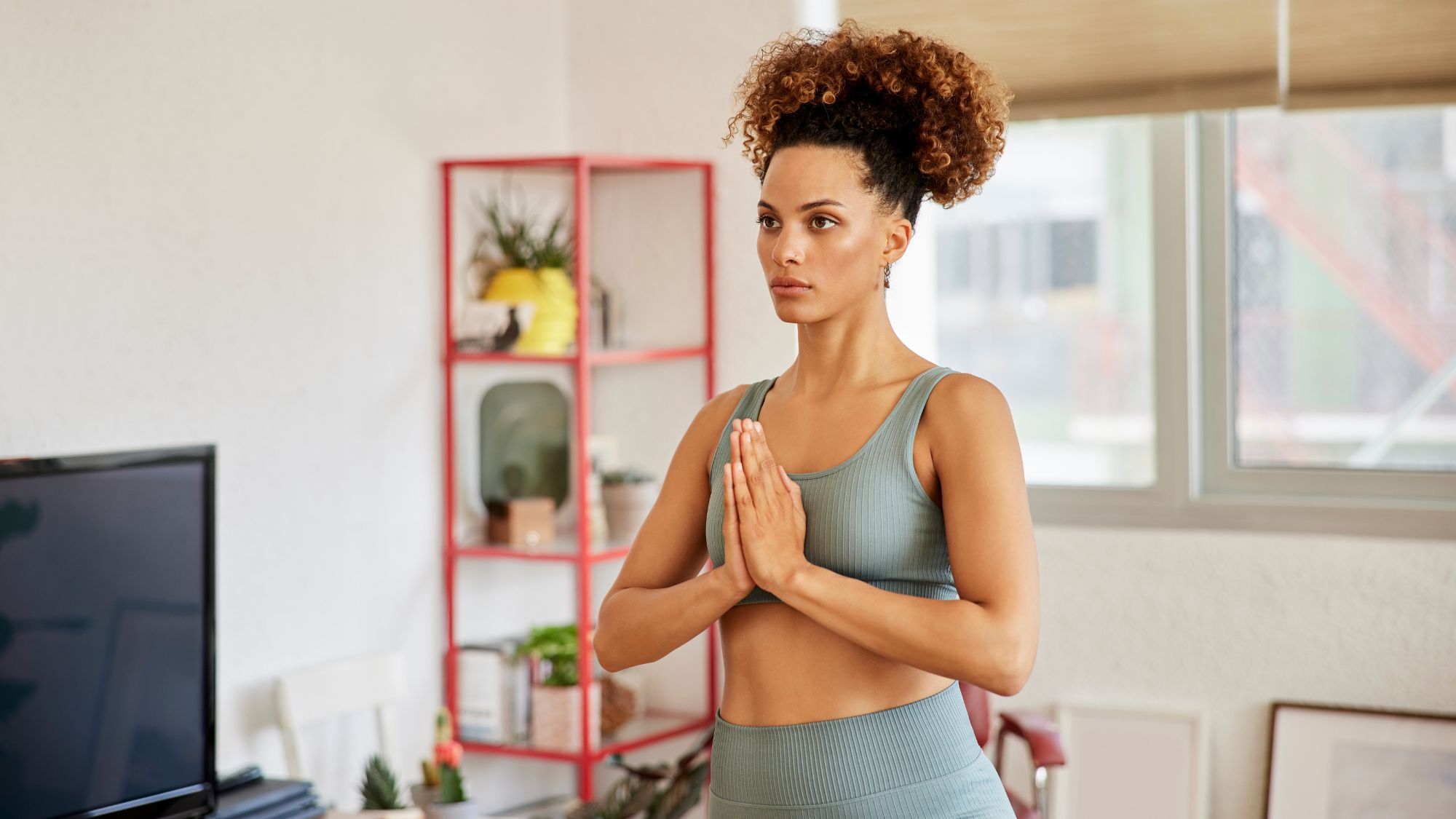Heard of cycle tracking? Why Olympian Jess Ennis Hill reckons it's key to smashing your workouts
Did you know? You can build up to 15% more lean muscle if you stack your strength training in the first half of your cycle.

You've probably heard of, or are already a convert to, cycle tracking. Not only is it a useful tool if you're trying to conceive (or just, you know, navigate the minefield that is female hormones), but cycle tracking can also be a really helpful way of making sure that you're training at your best. (Read our edit of the best period tracking apps, here).
How so? Well, scheduling your harder workouts at the times of the month where you'll be free from pesky PMS symptoms and subsequently able to give 100% sounds like a no-brainer, right? Besides there being a tonne of scientific research behind it, period tracking now also has the endorsement of an Olympian. Yep, Jessica Ennis Hill reckons it's about time you tried it, and we're taking notes.
The three-time world champion has an app which includes a whole section dedicated to cycle tracking and how to train around your period. So, we've picked her brains about the app, the practice of exercising around your TOTM, and got the expert opinions of physiologist doctor Emma Ross and doctor Helen Hartley, medical director at Bupa UK Insurance.
Keep reading for a little on the new app, but further, three expert definitions of period tracking around your menstrual cycle phases, a little more on what it is, plus how it could help your overall health, wellbeing, and training, too. Oh, and when you're done swotting up on mapping your cycle, be sure to check out our edit of the best celebrity workouts. While we can't promise Jess Ennis Hill-level results, we can promise some dynamic, fun, and fast-paced sweat sessions.
Cycle tracking: your guide
What is cycle tracking?
"Cycle tracking is the science of mapping your training to your menstrual cycle for maximum physical and psychological benefits," explains Ross.
As Ennis Hill explains, ultimately, women should be able to tune into how they feel and work with their hormonal cycles to feel the benefits. "Cycle trackign is a way of guiding yourself through your own unique hormonal cycle," she shares. Apps like Jennis will even give you training, tips, and advice at each stage.
Think about how you train. We're probably right in saying that you crack on with your life, fitting in runs, HIIT sessions and weight training without actually pausing and listening to your body. "As women, hormones peak and trough across our monthly cycle, and depending on whether they are high, or low, we will feel different. Taking advantage of what’s right for each of those moments and using it to your benefit can be totally life-changing," Ross continues.
Celebrity news, beauty, fashion advice, and fascinating features, delivered straight to your inbox!
Did you know that each woman experiences four different phases of their menstrual cycle? Across that, you'll experience a lot of hormonal changes which affect your motivation to train, the way your muscles adapt, how your body fuels and more, Ennis Hill explains.
"By understanding what’s happening hormonally and when, you can make sure to do what’s best for your body at the right time in your cycle, which means you feel more energised, build up to 15% more lean muscle, respond better to fitness and can reduce PMS," she goes on.
Ross points out that, for too long, women have been told to train in a generic way that isn't optimised for the female body - largely because the research has been done by men.
Benefits of cycle tracking
- It can reduce pre-menstrual symptoms. "One of our testers reduced pre-menstrual headaches by 65%," shares Rose.
- It can help you build lean muscle more effectively. Note this: "research has proven that if you stack your strength and resistance training in the first half of your cycle, it’s possible to build up to 15% more lean muscle than if it’s spread across the whole cycle," explains Rose. Neat.
- It gives you permission to rest. Rather than pushing yourself to work out every day, then feeling guilty when you can’t or don’t, the programme helps you identify when to rest and why.
- It maps training to your energy levels across your whole cycle - basically helping you do what’s right for your body, the doctor adds.
5 tips for cycle tracking and training around your TOTM:
1. Track your cycle
It's the whole point of this article, and Ennis Hill, Rose and Hartley all reckon that period tracking could seriously improve your quality of life.
"Knowing your menstrual cycle helps you to get to know what’s normal - and what isn’t - for your body," explains Hartley. "It will also help you to understand when’s best to exercise, when you'll get the most out of your workouts, and when it’s time to rest up and recharge," she goes on.
Do note here: the doctor also reckons that being able to recognise patterns in your emotions can be particularly helpful for those who experience premenstrual symptoms (PMS) or premenstrual dysphoric disorder (PMDD).
2. Don’t overdo it
This one's obvious, but important. "If you’re feeling low or fatigued, it’s important to not push yourself too much. Instead, why not try some gentle stretching, walking, swimming, or cycling? You’ll still reap the rewards of exercise and reduce any uncomfortable symptoms," shares Hartley.
Don't miss our guides to the best sports bras and workout leggings, tried and tested by our health editor, while you're here.
3. Listen to your body
The most important thing Hartley says you should aim to get right? Knowing and listening to your own body. "Every woman has a period that’s unique to them, and so only you know what’s right for you. Arm yourself with knowledge and then respond to how you feel," she recommends.
Read our guide to how to have a sustainable period, ft. our pick of the best period cups and period pants, while you're here.
4. Stick to your schedule, but mix up your activity
Keeping to your gym workouts or Pilates exercises can help keep you motivated during your monthly cycle, especially if you’re not feeling up to it, but mixing up your routine is also key. Hartley recommends being active three to four times a week - "it will help your body adapt and become stronger and fitter," she shares.
Fun fact: during the ovulation stage of your monthly cycle, your hormone levels start to peak and you may feel as though you have more energy, she explains. "This is the ideal opportunity to try something different, such as those higher intensity exercises like HIIT or a spin class," she shares.
5. Fuel your body with energy-boosting foods
You know that what you eat not only affects your physical health, but how you feel, too. "Improving your diet by eating regularly and ensuring there’s plenty of fresh fruit and vegetables on your plate can give you a boost," shares Hartley.
Not sure where to start? Our guide to energy boosting foods will help.
6. Don’t compare
For most women, exercise can alleviate symptoms associated with periods, but as periods vary, (in flow, pain level and mood, from person to person and month to month), it’s important to do what’s works best for your mind and body, shares Hartley.
Top tip: "experiment with different activities and then exercise when you feel up to it, or when you know from experience that it will help you feel better," she shares.

Ally is Marie Claire UK's Senior Health and Sustainability Editor, a well-regarded wellness expert, nine-time marathoner, and Boston Qualifying runner.
Utilising her impressive skillset and exceptional quality of writing, she pens investigative, review and first-person pieces that consistently demonstrate flair and originality.
As well as writing, Ally manages a team of freelancers, oversees all commissioning and strategy for her pillars, and spearheads the brand's annual Women in Sport covers, interviewing and shooting the likes of Mary Earps, Millie Bright, and Ilona Maher. Shortlisted for three BSMEs and winning one in 2022, Ally lives and breathes her verticals: her eye for a story and connections within the wellness sphere are unrivalled. Follow Ally on Instagram for more.
